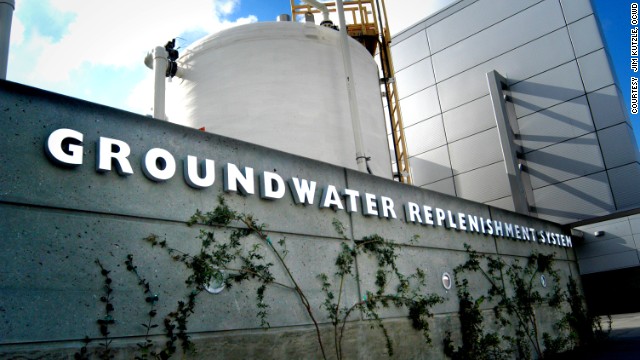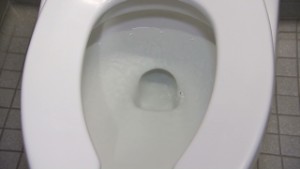A blog about Marinwood-Lucas Valley and the Marin Housing Element, politics, economics and social policy. The MOST DANGEROUS BLOG in Marinwood-Lucas Valley.
Saturday, April 11, 2015
Letter from Thomas Jefferson to James Madison on Private Property
 |
| Thomas Jefferson understood the importance of private property for all and most especially the poor. |
Letter from Thomas Jefferson to James Madison on Private Property
Thomas Jefferson and James Madison were political
allies and personal friends. Over the course of their lifetime, they wrote many
personal letters where they shared and debated the ideas which helped shape the
American system of government. This letter was written while Jefferson was
visiting France. He had spent the day walking through a portion of the French
countryside, 40 miles from Paris, where the French aristocrats often vacationed.
In his letter he notes the vast amount of land left uncultivated, reserved for
the aristocrats recreation and hunting, while the largest class of the French
population was landless and poor. He believed America should strive for a more
just and equal division of land where the citizens would be able to achieve
prosperity through hard work and the ownership of property. In his letter to
Madison he begins defining his belief that the small landowner is one of the
most important parts of the state.
Dear Sir,
Seven o’clock, and retired to
my fireside, I have determined to enter into conversation with you…
As soon as I had got clear of
the town I fell in with a poor woman walking at the same rate with myself and
going the same course. Wishing to know the condition of the laboring poor I
entered into conversation with her, which I began by enquiries for the path
which would lead me into the mountain: and thence proceeded to enquiries into
her vocation, condition and circumstances. She told me she was a day laborer at
8 sous or 4d. sterling the day: that she had two children to maintain, and to
pay a rent of 30 livres for her house (which would consume the hire of 75 days),
that often she could get no employment and of course was without bread. As we
had walked together near a mile and she had so far served me as a guide, I gave
her, on parting, 24 sous. She burst into tears of gratitude which I could
perceive was unfeigned because she was unable to utter a word. She had probably
never before received so great an aid. This little attendrissement, with the
solitude of my walk, led me into a train of reflections on that unequal division
of property which occasions the numberless instances of wretchedness which I had
observed in this country and is to be observed all over Europe.
The property of this country is
absolutely concentrated in a very few hands, having revenues of from half a
million of guineas a year downwards. These employ the flower of the country as
servants, some of them having as many as 200 domestics, not laboring. They
employ also a great number of manufacturers and tradesmen, and lastly the class
of laboring husbandmen. But after all there comes the most numerous of all
classes, that is, the poor who cannot find work. I asked myself what could be
the reason so many should be permitted to beg who are willing to work, in a
country where there is a very considerable proportion of uncultivated lands?
These lands are undisturbed only for the sake of game. I should seem then that
it must be because of the enormous wealth of the proprietors which places them
above attention to the increase of their revenues by permitting these lands to
be labored. I am conscious that an equal division of property is impracticable,
but the consequences of this enormous inequality producing so much misery to the
bulk of mankind, legislators cannot invent too many devices for subdividing
property, only taking care to let their subdivision go hand in hand with the
natural affections of the human mind. The descent of property of every kind
therefore to all the children, or to all the brothers and sisters, or other
relations in equal degree, is a politic measure and a practicable one. Another
means of silently lessening the inequality of property is to exempt all from
taxation below a certain point, and to tax the higher portions or property in
geometrical progression as they rise. Whenever there are in any country
uncultivated lands and unemployed poor, it is clear that the laws of property
have been so far extended as to violate natural right. The earth is given as a
common stock for man to labor and live on. If for the encouragement of industry
we allow it to be appropriated, we must take care that other employment be
provided to those excluded from the appropriation. If we do not, the fundamental
right to labor the earth returns to the unemployed. It is too soon yet in our
country to say that every man who cannot find employment, but who can find
uncultivated land, shall be at liberty to cultivate it, paying a moderate rent.
But it is not too soon to provide by every possible means that as few as
possible shall be without a little portion of land. The small landholders are
the most precious part of the state.
Novato Community Alliance exposes Housing Mandate Fiction
 |
| Housing Advocates tell us the darnest things. |
Marinwood-Lucas Valley will grow by 37.5% if all of the housing is built according to the 2012 Housing Element. There are many reasons to be concerned with their "facts". Here is how Novato Community Alliance is addressing some of the FICTION created by ABAG and Housing advocates.
Fiction and Facts about
Planning for Housing Mandates
FICTION1. Novato will "takes care of its own" by acting on the affordable housing allocation from the Association of Bay Area Governments (ABAG) | FACT1. The ABAG allocation identifies need at a regional level, not at a local level. ABAG has little knowledge of the numbers of Novatoans, or even the number of people working in Novato, who live in substandard housing. |
2. Novato teachers, firefighters, policemen, nurses, and clergy find high density housing attractive.
| 2. Some of the teachers and policemen who lived in Bay Vista (220 unit complex located in the Hamilton area of Novato) found the experience less than optimal. High density housing starts at around 30 units per acre. |
| 3. Novatoans against high density housing are NIMBYs, racists, and/or bigots. | 3. Novatoans against high density housing object to crowding large numbers of people into small areas because they believe the crowding has negative impacts on human beings. |
| 4. Good design compensates for high density; the council can set aside regulations in favor of buildings that they consider 'exceptionally well-designed'. | 4. Good design makes high density housing more livable but greater numbers of people still have greater numbers of needs to be met. The Council sometimes sees 'exceptionally good design' where others see large ugly massing which is out of scale with its surroundings. |
| 5. Compact city development and mass transit are the most efficient ways for Novato to combat global warming. | 5. Novato's population is not large enough to create much reduction of greenhouse gas through mass transit. The SMART train is only predicted to reduce traffic by one percent or less. Locating enough high paying jobs in Novato so that people do not have to drive every day to San Francisco would help reduce greenhouse gas. 85% of the land in Marin is already set aside as agricultural or open space; industrialization of Marin is hardly feasible with the exception of a few very clean small industries. |
| 6. High density does not increase crime or demands for infrastructure; it decreases congestion. | 6. By definition, high density housing increases population. Increased population causes increased infrastructure demands of all types, including demand for transportation and city services. Although the cost per high density housing resident may be lower because building costs per unit are lower, the dollar costs for additional infrastructure (including demand for transportation and city services) are significant . |
| 7. High density housing projects subsidized by tax-increment financing (Redevelopment Agency financing) are cost effective. | 7. Tax-increment financing effectively transfers tax revenues from schools, fire, police, and other essential services to property developers. Tax increment financing is exempt from voter approval. Cities end up raising taxes or cutting services or both. |
| 8. Property values are not affected by large high density developments nearby. | 8. Zoning for different densities was originally created to protect property values. State housing law requires that land be "up-zoned" to accommodate medium density for low income housing, unless enough medium density zoning already exists. That is, city planners don't have to provide much documentation about feasibility of "up zoning" if they submit high density affordable housing options. Additionally, California Housing and Community Development offers "safe harbor" rules which allow for even greater up-zoning for high density (up to 30 units/acre). |
| 9. People will want to live in high density housing near transit so they can walk to nearby transit or ride their bikes to commute to work. |
9. People take transit when it competes favorably with the automobile in ease, speed, and cost. Most Marin County transit at present does not compare well.
|
| 10. Best practices in management are always used in affordable housing developments. The state and local governments are proactive in following up on problems in housing projects. | 10. There is a great deal of confusion about the responsibility for poor management of affordable housing. State and local agencies are strapped for money and are cutting back on policy enforcement personnel. |
| 11. Mixed use zoning discourages business investment. | 11. Mixed use zoning may not result in profit margins as large as those where housing does not have to be considered at all however, that does not mean that mixed use development is not profitable. |
| 12. The European Model, which is compact development, coupled with the transit option of the SMART train, will enhance Novatoans' quality of life. | 12. Europeans were forced into compact development early on by population and the lack of wood, conditions which do not necessarily apply here. In stark contrast to European train service, the SMART train is on the road to becoming the little train to nowhere, reducing more of Sonoma's congestion problems than Marin's. |
| 13. Everyone deserves to live in Novato. | 13. If everyone got what they deserved, where would we all be? See more at Novato Community Alliance |
Friday, April 10, 2015
From toilet to tap: Getting a taste for drinking recycled waste water
From toilet to tap: Getting a taste for drinking recycled waste water
By Kieron Monks, for CNN
updated 10:46 AM EDT, Thu May 1, 2014
 California's Orange County Water District (OCWD), has a plant that recycles used water and returns it to the drinking supply.
California's Orange County Water District (OCWD), has a plant that recycles used water and returns it to the drinking supply. It is expanding production to 100 million gallons per day, enough for 850,000 people.
HIDE CAPTION
Water recycling
<<
<
1
2
3
4
5
6
7
>
>>
STORY HIGHLIGHTS
- U.S. and beyond increasingly looking to reusing sewage water for drinking
- Half the world population will face water scarcity by 2030
- Reused water is completely healthy, but psychological barriers remain
- Singapore produces large amounts of high-quality recycled water
Vital Signs is a monthly program bringing viewers health stories from around the world. This month's show looks at water and health.
(CNN) -- A third successive year of California's worst drought in a century has the Golden State's reservoirs at record lows. Agriculture has been affected, hitting the local economy, while some small communities risk running out of water.
But business is booming in California's Orange County Water District (OCWD), through a pioneering wastewater treatment facility that recycles used water -- or sewage -- and returns it to the drinking supply. The plant is expanding production from 70 to 100 million gallons per day, enough for 850,000 people, around one-third of the county population. As the OWCD output is mixed with the main groundwater supply it reaches over 70% of residents.
 Sewer water recycled to tap water?
Sewer water recycled to tap water?
Global problem
As the shortages become more extreme and water supplies are cut, it has raised awareness that we need to find alternative resources.
Mike Markus, General Manager, Orange County Water District
Mike Markus, General Manager, Orange County Water District
The facility is among the oldest and largest of its type in the world, and could represent a model solution for a global problem. The U.N. warns that half the world population will face water scarcity by 2030, accelerated by climate change and population growth. Shortages on such a scale would threaten food production, as well as a health crisis through increased exposure to unsanitary water, which already kills millions each year through waterborne diseases such as cholera and diarrhea.
But the introduction of reuse systems has been difficult, with a high degree of public skepticism. Orange County began recycling water for non-potable use in the 1970s, but only began contributing to the drinking supply in 2008, combined with a comprehensive PR and education campaign to allay public fears.
Operators now feel the system is well established and ready to scale up. "It's a watershed moment right now, we're seeing widespread acceptance of these technologies," OCWD General Manager Mike Markus said. "As the shortages become more extreme and water supplies are cut, it has raised awareness that we need to find alternative resources."
The process works by re-routing a proportion of the 1.3 billion gallons of waste water generated in Southern California each day into a three-step treatment. The first is microfiltration of the treated waste water to remove solids, oils and bacteria, before the resulting liquid goes through reverse osmosis, pushing it through a fine plastic membrane that filters out viruses and pharmaceuticals. The water is then treated with UV light to remove any remaining organic compounds, before joining the main groundwater supply, which must pass strict quality controls to meet legal standards, and distribution to households.
 Drought bakes California, could dry up your wallet
Drought bakes California, could dry up your wallet Sheep herders feel drought pain
Sheep herders feel drought pain
The OCWD says the water exceeds all state and federal drinking water standards. Safety has also been established in pioneering projects around the world. Water-insecure Singapore, previously reliant on imports, now delivers 30% of its needs through the NEWater reclamation facility. Although only a small amount is added to its reservoirs, the output surpasses WHO standards for potable use to the extent that a high proportion is directed for industrial uses requiring ultra-clean water.
One of the world's earliest schemes, in Windhoek, Namibia, has been in operation since 1968 and has tackled both shortage and water-borne diseases. Over half of the Sub Saharan African population faces water insecurity, and the greatest health risk, diarrhea, kills over a million people each year in the region. But research showed that in the 1970s disease occurred at lower rates for people supplied by the Windhoek plant than through conventional treated sources.
The quality from sewage is very good, as good or better than the tap water in any city in the developed world.
Benedito Braga, President, World Water Council
Benedito Braga, President, World Water Council
"Standards are stricter because of the novelty of the technology and process," says Benedito Braga, President of the World Water Council. "The quality from sewage is very good, as good or better than the tap water in any city in the developed world."
The message is now being heeded and the model is spreading. California has put $1 billion into funding recycling for potable use ($800 million of that in low-interest loans), with new initiatives launched in Los Angeles, San Francisco and San Diego.
Texas, parts of which are also severely affected by drought, aims to generate 10% of all new supplies through reclaimed water by 2060. A facility in Big Spring has introduced the first "Direct Potable Reuse" scheme in the United States by sending recycled water to the final treatment plant without passing it through groundwater reserves.
Dealing with disgust
 Haiti's clean water crisis
Haiti's clean water crisis Clean water solutions for Haiti
Clean water solutions for Haiti
In each case, public relations are key, as recycled water schemes have been historically shot down by public disgust at the concept. This was most vividly shown in the Australian city of Toowoomba in 2006 when local activists represented by the group "Citizens against drinking sewage" defeated plans to introduce reclaimed sources, citing health risks and emotive factors.
But Australia also shows the extent to which attitudes have changed. After a three-year public trial, the city ofPerth will receive up to 20% of its drinking water from reclaimed sources in coming decades, with a reported 76% public support. A network of similar programs is being established across the country, according to theAustralian Water Recycling Center of Excellence.
Psychologists say the aversion is deeply held and difficult -- but not impossible -- to overcome. "The disgust comes from intuitive concepts of contagion," says Dr. Carol Nemeroff of the University of South Maine, who has studied reactions to reclaimed water. "It is magical in nature, the same type of thinking that underlines voodoo practices."
"One of the best ways to get past it is perceptual cues -- if you can see sparkling fresh, clear water, and taste it that helps to overcome the concept ... the contagion type thinking decreases with familiarity," says Nemeroff, adding that necessity can also be a key driver. "If you're desperate you'll override anything for survival."
Energy and cost
In Orange County and other facilities, mixing the output with groundwater is a largely unnecessary, confidence-building measure to allay public fears. But as awareness improves, operators hope to move from indirect to direct potable reuse, which would bring down energy use and costs, while avoiding the counter-intuitive step of re-contaminating purified water.
It's the same water now as when dinosaurs walked the earth.
Melissa Meeker, executive director, Water Reuse
Melissa Meeker, executive director, Water Reuse
"The main cost is energy and that is coming down all the time," says Mike Markus. "Improvements in membrane technology allow us to use less pressure to do the same thing." The energy cost of reverse osmosis has come down by 75% since the 1970s, he says, while emerging technologies such as Aquaporin may reduce it further. Even now, the cost is favorable compared with desalination or imported water in California.
Markus hopes such advances will allow for the creation of portable modular units that can be cheaply transported to the areas of the world with the greatest need.
Campaign group Water Reuse does much of its work in education outreach, through messages such as the "Downstream" concept, that all water is ultimately recycled. "It's the same water now as when dinosaurs walked the earth," says executive director Melissa Meeker. "It's about understanding the water cycle and how we fit into it. Once people think about it, they become more open-minded."
If costs continue to fall and public acceptance continues to grow, waste water can become a major defense against the projected scarcities of this century. The World Water Council projects that recycled sewage will be a normalized source of drinking water in cities around the world within 30 years, and much of the infrastructure and technology is already in place. It's up to us now to get used to it.
EDITOR'S NOTE: YUCK! Do we really need to grow Marin to the point we will be forced to drink sewer water!?
EDITOR'S NOTE: YUCK! Do we really need to grow Marin to the point we will be forced to drink sewer water!?
Thursday, April 9, 2015
Bank of America Crony Capitalist Bankers for Green Initiatives.
 |
| Crony Capitalist Bankers cash in on lucrative Government Business. |
Company to Exceed Current $20 Billion Goal by End of 2012; Sets New Internal Environmental Goals
Monday, June 11, 2012 9:30 am EDT
"Environmental business delivers value to our clients, return for our shareholders, and helps strengthen the economy"
Bank of America today announced a new 10-year, $50 billion environmental business goal to help address climate change, reduce demands on natural resources and advance lower-carbon economic solutions. The company also introduced significant new goals to reduce the environmental impact of its own operations.
The new goal, effective Jan. 1, 2013, follows the anticipated completion of the company’s current 10-year, $20 billion environmental business initiative – a program that is more than four years ahead of schedule.
“Environmental business delivers value to our clients, return for our shareholders, and helps strengthen the economy,” said Bank of America Chief Executive Officer Brian Moynihan. “We met our prior goal in about half the time we set for ourselves, so more than doubling our target is ambitious but achievable.”
The new environmental business initiative will consist primarily of lending, equipment finance, capital markets and advisory activity, carbon finance, and advice and investment solutions for clients. The areas of focus include:
- Energy efficiency – in residential, commercial, and public properties, as well as supporting the full supply chain that drives energy efficiency.
- Renewable energy and energy infrastructure – including wind, solar, hydro, biomass and waste-to-energy solutions and their upstream and downstream supply chains, as well as smart grid, large-scale energy storage and other important infrastructures.
- Transportation – including certain lower carbon forms of transport such as electric and hybrid electric vehicles, batteries/fuel cells and sustainable bio-fuels, as well as developing local and regional charging infrastructure to support the growth of new hybrid vehicle technologies.
- Water and waste – focusing on innovative new technologies and infrastructure development, including water purification and waste disposal and recycling.
The bank also announced a goal to provide $100 million in grants and program-related investments to nonprofit organizations, community development financial institutions and other non-governmental organizations promoting low-carbon and resource conservation solutions.
Bank of America will meet its new $50 billion goal by continuing to develop low-carbon business across its global platform. The company expects to grow its business activities around the world as governments, companies and individuals worldwide shift spending and investing patterns in response to energy security, resource efficiency and broader environmental awareness. The company also will work with traditional businesses such as agriculture, forestry, transportation, technology, retail and healthcare to help advance their low-carbon activities.
“Many of our clients are transitioning to more environmentally conscious business practices, products and services,” said Cathy Bessant, Global Technology and Operations executive and chair of Bank of America’s Environmental Council. “We can continue to grow our business, promote a greener global economy and address climate change by helping our clients meet their own sustainability objectives.”
Bank of America also will work with third parties to explore how best to quantify the impact of its capital commitment on reducing greenhouse gas (GHG) emissions and promoting energy conservation, renewable energy generation and other tangible environmental and societal benefits.
Today’s announcement builds on Bank of America’s legacy of leadership in the environmental arena. The company was one of the first financial institutions to launch a substantial, formal environmental business initiative, and as of March 31, 2012, it has delivered $17.9 billion toward that initiative, including:
- $8.4 billion, or 47 percent, for energy efficiency activities ranging from its $55 million Energy Efficiency Finance Program to provide low-cost loans and grants to support energy efficiency retrofits in low-income neighborhoods, to financing lighting, heating and cooling equipment upgrades in public housing developments, commercial and government buildings.
- $5 billion, or 28 percent, for renewable energy projects as diverse as helping the San Jose Unified School District in California become one of the largest solar powered systems in the world, and working with integrated food-energy business CleanStar Mozambique to replace thousands of charcoal-burning cook stoves with cleaner bio-ethanol fueled stoves. In 2011, the company helped arrange and finance the world’s two largest rooftop solar projects – with clients Prologis and NRG Energy, and SolarCity respectively – supporting the potential creation of more than a thousand megawatts of solar energy capacity and thousands of jobs across the U.S.
- Nearly $1 billion for consumer financing of hybrid vehicle purchases.
In 2004, Bank of America was the first financial institution to publicly commit to GHG reduction targets through the former EPA Climate Leaders program. In 2009, it was the first financial institution to exceed its targets: reducing emissions by 18 percent from 2004 to 2009 – twice its original 9 percent reduction goal. As part of the company’s commitment to LEED® (Leadership in Energy and Environmental Design) building, it partnered with The Durst Organization to build the Bank of America Tower at One Bryant Park, the world’s first Platinum-certified high-rise office building under the LEED Core and Shell rating system.
New internal environmental goals
Today, Bank of America also announced new operational goals it plans to achieve by 2015:
- 25 percent reduction in energy consumption from 2004 – equal to eliminating 1.2 million megawatt hours of annual energy use from our portfolio.
- 20 percent reduction in paper consumption (2010 baseline); paper used will:
- Contain 20 percent post-consumer recycled content.
- Be sourced entirely from certified forests.
- 20 percent reduction in global water consumption (2010 baseline).
- 70 percent diversion of global waste from landfill.
- All electronic waste streams to be disposed of using certified, responsible vendors.
These new goals build on the May 2011 announcement that by 2015, Bank of America plans to achieve:
- More than 30 percent aggregate reduction in global GHG emissions (2004 baseline).
- 20 percent LEED certification within its corporate workplace portfolio.
“Meeting these aggressive, industry-leading goals requires new ways of working across our company,” said Bessant. “We have a strong culture of environmental sustainability. Our work is even stronger due to important collaboration with a number of leaders in this space like Ceres, Carbon Disclosure Project and the U.S. Green Building Council, who have helped us define and shape our focus as we continue to deliver impressive results.”
This year, the United Nations launched the Sustainable Energy for All initiative, a public-private partnership that highlights the important link between energy – in particular, energy access, energy efficiency and renewable energy – and broader development issues. Bank of America will further discuss its renewed external and internal goals with global leaders of governmental, private sector and non-governmental organizations at the United Nations Conference on Sustainable Development’s Rio+20 Conference in June, where the UN will lay out an ambitious range of energy targets.
Bank of America
Bank of America is one of the world's largest financial institutions, serving individual consumers, small- and middle-market businesses and large corporations with a full range of banking, investing, asset management and other financial and risk management products and services. The company provides unmatched convenience in the United States, serving approximately 57 million consumer and small business relationships with approximately 5,700 retail banking offices and approximately 17,250 ATMs and award-winning online banking with 30 million active users. Bank of America is among the world's leading wealth management companies and is a global leader in corporate and investment banking and trading across a broad range of asset classes, serving corporations, governments, institutions and individuals around the world. Bank of America offers industry-leading support to approximately 4 million small business owners through a suite of innovative, easy-to-use online products and services. The company serves clients through operations in more than 40 countries. Bank of America Corporation stock (NYSE: BAC) is a component of the Dow Jones Industrial Average and is listed on the New York Stock Exchange.
For more Bank of America news, visit the Bank of America newsroom.
Subscribe to:
Comments (Atom)

